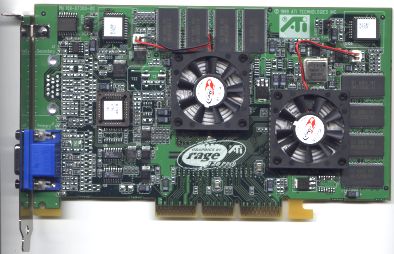ATI Rage Fury MAXX Review
Introduction
It's finally here, the brute-force powerhouse that ATI has been hiding behind closed doors for last minute tweaks, driver enhancements and tuning, the Rage Fury MAXX. In November we brought you a bit of a teaser (see Preview of the Double Whopper - ATI's Rage Fury MAXX ) as we took a close look at the MAXX using a beta board running early drivers and things seemed to be going very well. With the on-going war between fill-rate and T&L, ATI has taken the old, proven and easier road to fill-rate as they packed in two Rage 128 PRO graphic chips along with a massive 64 MBs of memory. This is quite a brute force approach to high fill-rate and memory bandwidth performance by basically doubling the hardware on the board, although it doesn't go quite as far as the desperate attempt of 3Dfx with their cost intensive two to four-chip 'Voodoo4' or 'Voodoo5' solution. Now that we have a released board, we are no longer held back by any rules. No beta hardware, early drivers, no limited testing and of course no mercy anymore. This time around, it's no holds barred.
The Beast
For those unfamiliar with the Rage Fury MAXX, it literally is two Rage 128 PRO chips each with isolated 32 MBs of memory per chip. That's right, two graphics processors and 64 MBs of memory on one board. Unlike the first consumer brute-force approach taken by 3dfx using SLI, the ATI product uses AFR Technology to tap the power of both graphics processors. In essence, AFR Technology lets the graphics card alternate rendering of each frame per Rage 128 PRO chip. AFR gives ATI fill-rates never before seen in their products as well as a broad memory band that can deal with memory intensive factors like 32-bit textures and high resolutions. The Rage Fury MAXX also sports the ATI Rage Theatre chip that enhances DVD playback and offers impressive video encoding. For greater details on the Rage 128 PRO chip, check out our ATI Rage Fury Pro Review .
Get Tom's Hardware's best news and in-depth reviews, straight to your inbox.
